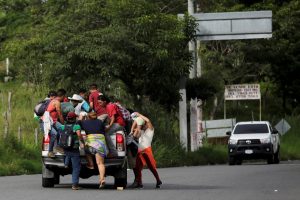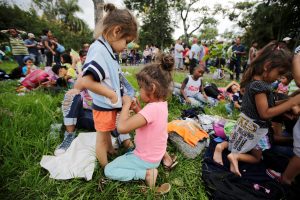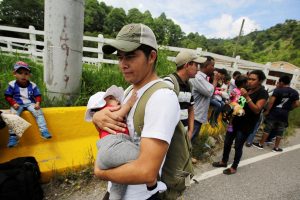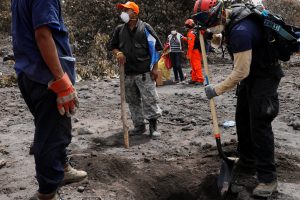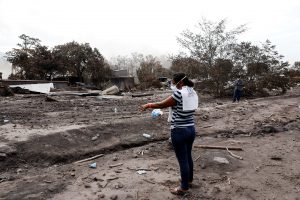
By Susan Heavey
WASHINGTON (Reuters) – President Donald Trump said on Monday he has told the U.S. military and border authorities that a migrant caravan heading toward the United States from Central America represented a national emergency, as he vowed to cut aid to the region.
“Guatemala, Honduras and El Salvador were not able to do the job of stopping people from leaving their country and coming illegally to the U.S. We will now begin cutting off, or substantially reducing, the massive foreign aid routinely given to them,” Trump wrote in a series of posts on Twitter.
Since Trump became president last year, the United States has already moved to sharply decrease aid to Central America.
In 2016, the United States provided some $131.2 million in aid to Guatemala, $98.3 million to Honduras, and $67.9 million to El Salvador, according to official U.S. data. By next year, those sums were projected to fall to $69.4 million for Guatemala, $65.8 million for Honduras, and $45.7 million in the case of El Salvador. Combined, the cuts amount to a reduction of almost 40 percent for the three nations.
Thousands of mostly Honduran migrants crowded into the Mexican border city of Tapachula over the weekend after trekking on foot from the Guatemalan border, defying threats by Trump that he will close the U.S.-Mexico border if they advanced, as well as warnings from the Mexican government.
Mexican police in riot gear shadowed the caravan’s arrival along a southern highway but did not impede the migrants’ journey.
“Sadly, it looks like Mexico’s Police and Military are unable to stop the Caravan heading to the Southern Border of the United States,” Trump wrote in a tweet, adding: “I have alerted Border Patrol and Military that this is a National Emergy.”
Trump, who has taken a hard line toward illegal immigration since taking office last year, gave no other details about his administration’s actions.
Representatives for the White House and the U.S. Border Patrol did not immediately reply to requests for comment. Representatives for the Pentagon and the U.S. State Department referred questions to the White House.
Trump and his fellow Republicans have sought to elevate the caravan as a campaign issue ahead of the Nov. 6 congressional elections in which his party is fighting to maintain control of the U.S. Senate and House of Representatives.
Congress has failed to fully fund Trump’s proposed wall along the U.S.-Mexican border, which he has argued is needed to combat illegal immigration.
NATIONAL GUARD AT BORDER
In April, Trump raised the prospect of sending military forces to the U.S.-Mexico border to stop illegal immigrants, raising questions in Congress and among legal experts about troop deployments on U.S. soil.
A 19th-century federal law restricts using the Army and other main branches of the military for civilian law enforcement on American soil, unless specifically authorized by Congress. But the military can provide support services to law enforcement and has done so on occasion since the 1980s.
Later in April, Trump and Defense Secretary James Mattis authorized up to 4,000 National Guard personnel to help the Department of Homeland Security secure the border if four Southwestern U.S. states.
Some specific statutes authorize the president to deploy troops within the United States for riot control or relief efforts after natural disasters.
Trump, who has made immigration a central part of his platform, earlier threatened to halt aid to the region, and potentially close the U.S. border with Mexico with the help of the military if the migrants’ march is not stopped.
Trump travels to Texas, a key border state, later on Monday to campaign for Republican U.S. Senator Ted Cruz. Cruz, who challenged Trump for the 2016 Republican presidential nomination, is seeking re-election.
In a tweet on Monday, Republican U.S. Senator Marco Rubio wrote: “While unlawful migration to U.S. from Central America is caused by real crisis, the migrant ‘caravan’ was manufactured by supporters of a radical agenda who are using poor and desperate people to try and embarrass and undermine the U.S. in the region. But it’s going to backfire on them.”
(Reporting by Susan Heavey and Makini Brice; Editing by Jonathan Oatis)




